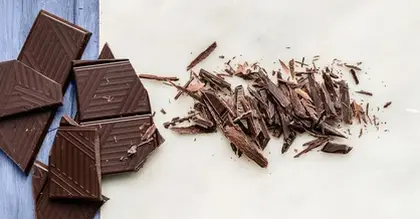
- Eating foods rich in dietary fiber is part of a healthy diet.
- One lesser-known rich source of dietary fiber called chitin can be found in the exoskeletons of crustaceans and insects, as well as in mushrooms and other fungi.
- Via a mouse model, researchers from the Washington University School of Medicine in St. Louis have found evidence that consuming chitin can help enhance digestion, lower body fat, and promote weight loss.
Eating foods rich in fiber forms part of a healthy diet. This is because fiber helps the body in various ways, including improving digestion, maintaining a healthy weight, and helping solid waste move through the body more easily.
Past studies also show that dietary fiber can help
While most people may be aware that dietary fiber can be found in fruits, vegetables, legumes, and whole grains, there are some lesser-known great sources of fiber, such as the exoskeletons of
This form of fiber is known as
This study was recently published in the journal Science.
Chitin is a naturally occurring
Chitin acts a bit like the protein keratin found in human nails. The chitin in insects and crustaceans helps make their hard, protective outer shell.
As a type of insoluble fiber, chitin does not dissolve in water, and it aids digestion by helping to move materials through the
Additionally, previous research shows chitin provides other benefits to the body, including:
acting as a prebiotic in the gut microbiomereducing inflammation preventing constipation promoting weight loss offering skin protection .
According to Dr. Steven Van Dyken, an assistant professor of pathology and immunology at the Washington University School of Medicine in St. Louis and lead author of this study, his research team was interested in understanding immune responses to different types of foods and has been studying how the body responds to chitin, which is abundant in these types of foods.
“Dietary fiber intake is associated with healthy
During the study, scientists found an immune system response during chitin digestion. This is because after consuming chitin,
This automatically triggers an immune response, telling stomach cells to ramp up the production of
“We studied how chitin is broken down or digested by the body’s own chitinases,” Dr. Van Dyken continued. “This happens after eating chitin, and the digestive process is enhanced by activating cells of the immune system that also affect obesity and metabolism. We think that intervening in this pathway might be a way to improve metabolic health.”
During this study, Dr. Van Dyken and his team found the mice who consumed chitin, so it activated their immune system, but their body did not digest it, saw the greatest impact on obesity.
Researchers used a mouse model that was fed a high-fat diet. Some of the mice were then given chitin.
According to researchers, some mice could not produce chitinases to break down the chitin. Because of that inability, these particular mice gained the least weight, had the lowest body fat measurements, and resisted obesity, compared to the mice that either did not receive chitin or did receive it but were able to break it down.
Dr. Van Dyken said they anticipated these results from previous studies showing that eating dietary fibers that are not digested very efficiently improves metabolic health.
“Activation of
“We have known for a long time that increasing dietary fiber intake tends to be beneficial for metabolic health, but now we have a better appreciation for how different fibers affect the body. We are further studying this pathway in humans and exploring whether it can be therapeutically targeted to treat
metabolic diseases .”– Dr. Steven Van Dyken
MNT also spoke with Monique Richard, a registered dietitian nutritionist, owner of Nutrition-In-Sight, and national media spokesperson for the Academy of Nutrition and Dietetics, about this study. Richard was not involved in this research.
Richard said her initial reaction to the study was to recognize that it is based on animal models, not humans.
“This type of research is limited and does not always translate to the same results in humans,” Richard told us. “For example, the mice studied had a sterile intestinal tract free from bacteria.“
“Such an environment does not exist in humans. There are many factors that come into play to break down what is ingested in our gastrointestinal tract, from the pancreas secreting digestive enzymes, to bacteria that we both produce or that naturally populate and inhabit our gastrointestinal tract,” she explained.
Yet Richard also suggested it is important for human health to take advantage of all the foods rich in insoluble fiber and many other beneficial nutrients:
“Eating a variety of fiber-rich foods that contain both
soluble — turns into gel with liquid — and insoluble fiber such as beans, whole grains like oatmeal, fruits with their pulp and/or skins, most vegetables especially mushrooms, celery, cauliflower, green beans, and leafy greens will be beneficial for sustaining energy, supporting weight management, as well as decreasing insulin resistance, cholesterol levels, and heart disease risk factors.”
Richard said that consuming a minimum of 25-35 grams a day of fiber is beneficial to overall Health.
“An example of a fiber-rich food serving would be a half-cup of pinto beans which provides approximately 7-8 grams of fiber,” she continued.
“In addition, meeting with a registered dietitian nutritionist (RDN) is encouraged to assess if supplements might be beneficial or other factors related to nutritional needs can be addressed regarding a well-balanced, varied diet tailored to that individual’s needs,” said Richard.





